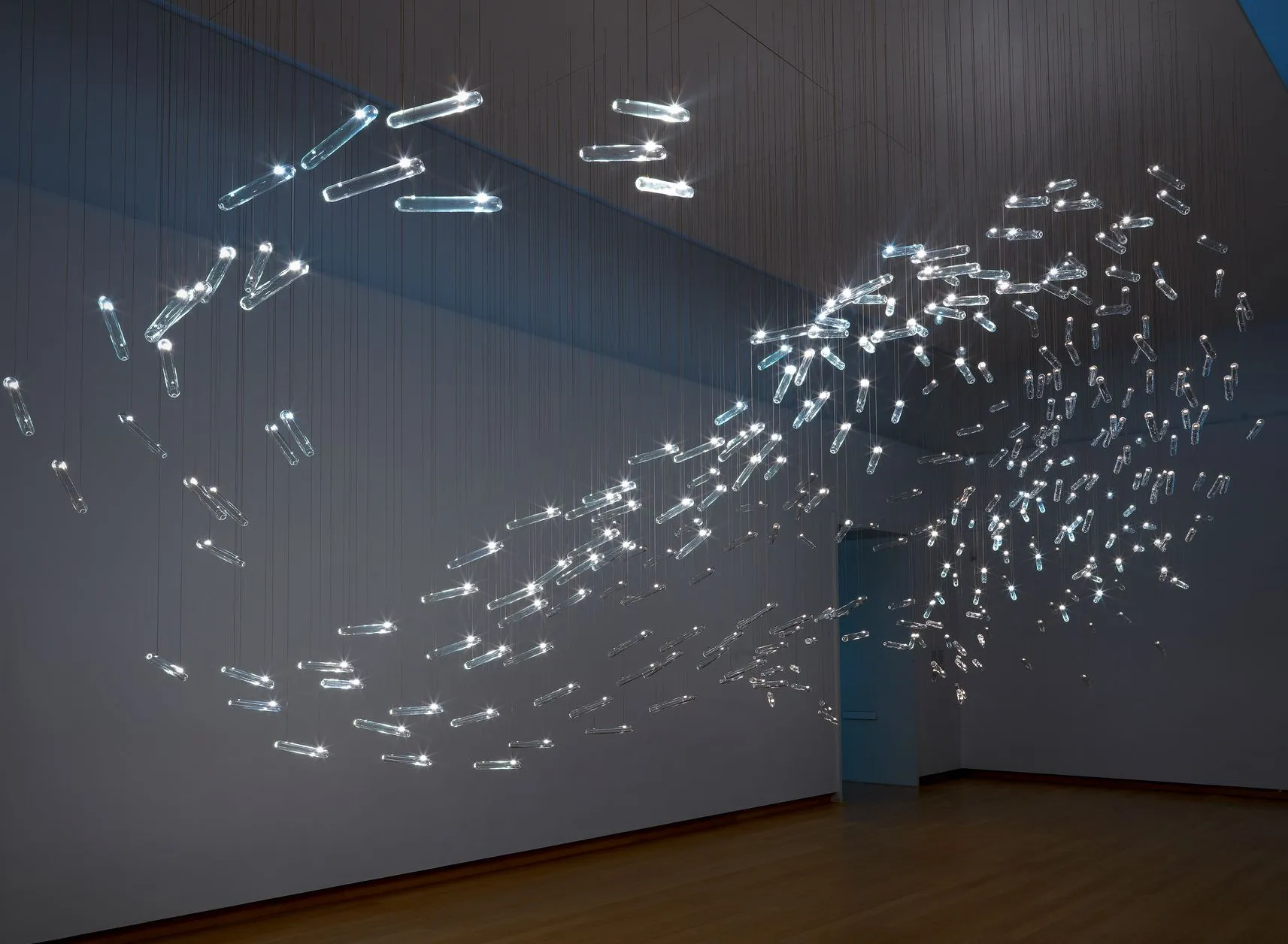Sunday Inspiration: Studio Drift’s Levitating Concrete Monolith and Many More
Studio Drift’s debut solo exhibition, Coded Nature, opened at The Stedelijk Museum in Amsterdam on April 25 and will run until August 26, 2018. The highlight of the show is ‘Drifter’, a 4 meter x 2 meter floating concrete monolith that defies gravity.

Studio Drift collective was founded in 2007 by Lonneke Gordijn and Ralph Nauta. They create multi-disciplinary site-specific installations, sculptures, objects, and films. Sustainability has been heavily explored in the duo’s artistic practice. The work studies the impact of hi-tech developments on nature and mankind’s ability to distinguish fact from fiction.
Other works featured in their Coded Nature exhibition include:

Flylight, 2009 Courtesy Carpenters Workshop Gallery, London. Photo: Gert Jan van Rooij

Fragile Future Chandelier 3.5 (2012), manufactured under the control of Carpenters Workshop Gallery

Chair, Ghost Collection, 2008
About Studio Drift
Studio Drift was established in 2007 by Lonneke Gordijn and Ralph Nauta, who both graduated from the Design Academy Eindhoven in 2005. In their installations and interactive sculptures the relationship between nature, human and technology is key. Gordijn’s fascination for nature and that of Nauta for science fiction and technology intersect in an intriguing way, it is said on their website (studiodrift.com). Over more than a decade of their existence, Studio Drift’s work in product and furniture design has evolved into increasingly larger, often site-specific and moving installations which they have realised all over the world. They collaborate with scientists, programmers, engineers, and other specialists in the development of projects. The works occupy a wholly unique place between disciplines such as tech art, performance, and biodesign.
The duo have previously exhibited at leading museums and fairs worldwide, including the V&A Museum (United Kingdom), Dubai Art Fair (United Arab Emirates), PAD Paris (France), and the Sao Paolo Biennale (Brazil). Their works have been purchased by the Louis Vuitton Foundation, The Rijksmuseum, and Stedelijk Museum, amongst others.
Drifter Monolith
One of the most famous artworks byf Lonneke Gordijn and Ralph Nauta was “Drifter“, a floating concrete monolith measuring four by two by two meters. The piece was inspired by the literary classic “Utopia” (1516) by Thomas More who envisioned an ideal communistic society with no private property where people are dedicated to their true goal, “pleasure as their end and happiness.” In utopia anything that can be imagined can be built with the help of a malleable miracle material.
Other Studio Drift works
As it is said on the Studio Drift’s website, their work “Materialism” deconstructs everyday “made objects” to only their raw materials. It includes new art pieces based on everyday objects of Finnish culture, such as a Nokia phone and a pair of Fiskars scissors. “Materialism” is an ongoing research project in which studio drift explores the everyday “made objects” that surround us, by “de-constructing the constructed”.
The duo’s project “Fragile Future” fuses nature and technology into a multidisciplinary light sculpture. The project can be seen as a critical yet utopian vision on the future of our planet, where two seemingly opposite evolutions have made a pact to survive.
“Semblance” is a performance piece. This outdoor sculpture joins mechanical and natural forces together that are essential in our tech driven evolution. Studio Drift further explores the highly evolved natural mechanism called ‘nyctinasty’ in Semblance; a light sculpture that unfolds and retreats in a fascinating choreography.




